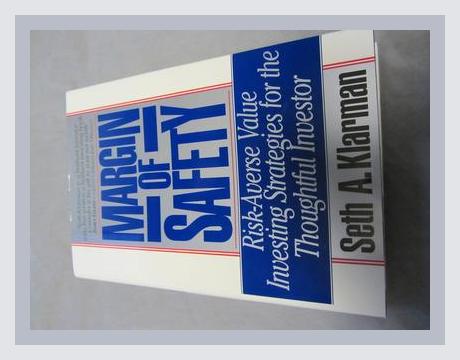Finance, Economics, Trading, InvestingFinancial Markets and Instruments
Margin of Safety by Seth A. Klarman: A Comprehensive Summary
Introduction
“Margin of Safety” by Seth A. Klarman is a foundational text in the world of value investing, offering timeless advice on navigating the complexities of financial markets. Klarman, a renowned investor and the founder of Baupost Group, distills his investment philosophy into this book, emphasizing the importance of a conservative, disciplined approach to investing. The book is a must-read for anyone serious about preserving capital and achieving consistent returns in the often unpredictable world of finance.
Part 1: The Foundations of Value Investing
Klarman begins by outlining the core principles of value investing, contrasting it sharply with the speculative nature of most market participants. He emphasizes that value investing is about purchasing securities for less than their intrinsic value, which provides a “margin of safety” against losses. This margin is the cornerstone of Klarman’s philosophy, as it allows investors to absorb the shocks of market volatility without sustaining significant losses.
Example: Klarman draws on the example of buying a dollar for fifty cents, a metaphor for purchasing undervalued stocks. He argues that the difference between the purchase price and the intrinsic value of an asset is what protects investors from downturns and enables them to profit from future appreciation.
Quote: “The single most important factor in buying a stock is the price you pay.”
Part 2: The Perils of Speculation
In the second part of the book, Klarman dives into the dangers of speculation, warning against the temptations of short-term gains and market timing. He critiques the behavior of many investors who chase trends, rely on market predictions, and overlook the fundamental value of the assets they purchase.
Example: Klarman references the late 1980s market environment, where the widespread speculative frenzy led to inflated stock prices, ultimately resulting in significant losses for those who participated. He uses this historical context to highlight the risks of speculative investing and the importance of maintaining a disciplined, long-term perspective.
Quote: “Speculators are obsessed with predicting the future, while investors focus on understanding the value of the present.”
Part 3: Risk Management and the Margin of Safety
Klarman dedicates a substantial portion of the book to risk management, a critical component of his investment strategy. He argues that the key to successful investing is not just in identifying opportunities but in managing the risks associated with them. The “margin of safety” concept is central to this discussion, as it provides a buffer against the uncertainties of the market.
Example: Klarman discusses the concept of “absolute returns,” which prioritize the preservation of capital over chasing high returns. He illustrates this with the example of avoiding highly leveraged investments, which can amplify losses during downturns, even if they offer the potential for high returns in favorable market conditions.
Quote: “In the long run, the return on investment depends on the price paid. The higher the price, the lower the return.”
Part 4: The Psychology of Investing
Understanding the psychological aspects of investing is crucial, and Klarman explores how emotions can lead to poor investment decisions. He discusses the pitfalls of overconfidence, herd mentality, and the fear of missing out (FOMO), which can drive investors to make irrational choices.
Example: Klarman cites the tech bubble of the late 1990s, where the irrational exuberance surrounding internet stocks led to astronomical valuations. Many investors, driven by the fear of missing out, ignored the fundamental flaws in these companies, leading to devastating losses when the bubble burst.
Part 5: Portfolio Management
In this section, Klarman outlines his approach to portfolio management, emphasizing the importance of diversification and the careful selection of investments. He advocates for a concentrated portfolio of high-conviction ideas rather than a broad, index-like approach.
Example: Klarman explains his strategy of holding a limited number of stocks in which he has the highest confidence, rather than spreading investments too thinly. This allows for more thorough research and a deeper understanding of each investment, which is crucial for maintaining a margin of safety.
Part 6: The Art of Selling
Klarman also delves into the often-overlooked aspect of investing: knowing when to sell. He discusses the importance of having a clear exit strategy and the discipline to follow through, even when emotions might suggest otherwise.
Example: Klarman recounts a situation where he sold a stock that had reached his estimated intrinsic value, despite the stock continuing to rise afterward. This decision, grounded in discipline and adherence to his investment criteria, ultimately protected him from the subsequent downturn in the stock’s price.
Conclusion: The Legacy of Margin of Safety
“Margin of Safety” remains a seminal work in the field of value investing, offering insights that are as relevant today as they were when the book was first published. Klarman’s emphasis on discipline, risk management, and the importance of intrinsic value over market sentiment has influenced countless investors. The book’s enduring impact lies in its ability to guide investors through the complexities of financial markets with a steady, principled approach.
Critical Reception and Relevance: Although “Margin of Safety” is out of print and copies are hard to find, its principles continue to be highly regarded in the investment community. In a world where market speculation and short-termism often dominate, Klarman’s advice on maintaining a margin of safety is more relevant than ever, especially in times of economic uncertainty.
Final Quote: “The stock market is the story of cycles and of the human behavior that is responsible for overreactions in both directions.”
This summary captures the essence of “Margin of Safety” by Seth A. Klarman, offering a deep dive into the book’s central themes and providing a clear understanding of the principles that have made it a cornerstone of value investing.
Finance, Economics, Trading, InvestingFinancial Markets and Instruments
